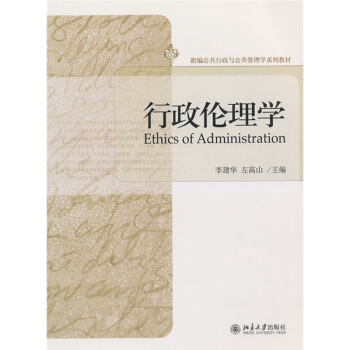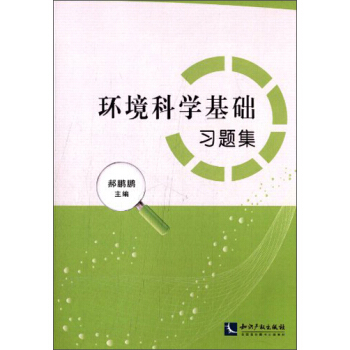![時代教育·國外高校優秀教材精選:西爾斯當代大學物理(上冊)(英文改編版)(原書第11版) [UNIVERSITY PHYSICS with modern physics(11th Ed.)]](https://pic.qciss.net/10134099/b20296e5-e680-4dc5-bd0b-646d565ceeba.jpg)

具體描述
編輯推薦
《西爾斯當代大學物理(上冊·英文改編版)(原書第11版)》配有豐富的教輔資源,索取事宜見書後的“教學支持信息錶”。內容簡介
本英文改編教材的原書——《西爾斯物理學》是幾代編著者長達半個多世紀物理教育探索與創新的産物,其許多可圈可點的特色在美國乃至世界其他國傢,影響瞭一代又一代的大學師生,是當今世界發行量最大的主流教材之一。本教材分上下兩冊。《西爾斯當代大學物理(上冊·英文改編版)(原書第11版)》是下冊,主要內容有電磁學、波動光學、近代物理學等。
《西爾斯當代大學物理(上冊·英文改編版)(原書第11版)》既充分體現瞭原書的特色,又在適閤我國國情方麵有瞭新的特點,主要錶現在:對原書取捨得當,篇幅適當,教材內容覆蓋瞭教育部最新教學基本要求建議的75個A類知識點和部分B類知識點;教材95%以上是原書的文字,體現瞭原書教學理念的精華,整個教材體係具有更好的係統性和完整性;內容生動、豐富,圖文並茂,舉例鮮活,趣味性強,聯係實際密切,強調概念理解,注重能力培養;每章的問題引入法、正文探索式的敘述法以及每節的思考題檢測法等多種教學方法並用,將有效調動學生學習的積極性,提高學生學習的效能;所有例題都采用四步解題法:審題(Identify)、破題(Set up)、求解(Excute)和討論(EvaIuate),這種規範、科學的解題方式十分有利於學生形成思維清晰、錶述準確、方法明確的解題習慣,並能逐步獲得較強的解決實際問題的能力;英語行文規範、流暢,原汁原味,代錶瞭當前科技英語文獻的風格,是我國學生學習英文科技寫作的極好範本。
本教材為高等學校理工科各專業學生的大學物理雙語教學專用教材。由於與國內教材有很強的相關對應性,故對於希望瞭解物理知識英文錶述的非雙語教學的師生及其他科技工作者,《西爾斯當代大學物理(上冊·英文改編版)(原書第11版)》也是一本十分有益的參考書。
內頁插圖
目錄
Preface1 PHYSICAL QUANTITIES AND VECTORS
1.1 The Nature of Physics
1.2 Idealized Models
1.3 Standards and Units
1.4 Uncertainty and Significant Figures
1.5 Vectors and Scalars
1.6 Vector Algebra
1.7 Unit Vectors and Component
Expression
Answer to Chapter Opening Question
Exercises
2 KINEMATICS
2.1 Particle Kinematics
2.2 Position Vector and Displacement
2.3 Velocity and Acceleration
2.4 Rectilinear Motion
2.5 Two Fundamental Problems in Kinematics
2.6 Relative Motion
Answer to Chapter Opening Question
Exercises
3 DYNAMICS
3.1 Particle Dynamics
3.2 Newton s Laws
3.3 Understanding Forces
3.4 Dynamics of Circular Motion
3.5 Non-inertial Frame and Inertial Forces
Answer to Chapter Opening Question
Exercises
4 WORK AND ENERGY
4.1 Kinetic Energy and Work
4.2 Calculating the Work
4.3 Path Independence of Conservative Forces
4.4 Potential Energy
4.5 Conservation of Mechanical Energy
4.6 Find the Conservative Force from Potential Energy
Answer to Chapter Opening Question
Exercises
5 MOMENTUM AND IMPULSE
5.1 Definition of Momentum
5.2 Conservation of Momentum
5.3 Impulse
5.4 Collisions
5.5 Center of Mass
5.6 Rocket Propulsion
5.7 Problem-Solving Strategy ISEE
Answer to Chapter Opening Question
Exercises
6 ROTATION OF RIGID BODIES
6.1 Angular Velocity and Acceleration
6.2 Rotation with Constant Angular Acceleration
6.3 Relating Linear and Angular Kinematics
6.4 Energy in Rotational Motion
6.5 Parallel-Axis Theorem
6.6 Moment of Inertia Calculations
Answer to Chapter Opening Question
Answers to Test Your Understanding
Questions
Exercises
7 DYNAMICS OF ROTATIONAL MOTION
7.1 Torque
7.2 Torque and Angular Acceleration fora Rigid Body
7.3 Rigid-Body Rotation About a MovingAxis
7.4 Work and Power in RotationalMotion
7.5 Angular Momentum
7.6 Conservation of Angular Momentum
7.7 Gyroscopes and Precession
Answer to Chapter Opening Question
Answers to Test Your Understanding
Questions
Exercises
8 PERIODIC MOTION
8.1 Describing Oscillation
8.2 Simple Harmonic Motion
8.3 Energy in Simple Harmonic Motion
8.4 Applications of Simple Harmonic Motion
8.5 The Simple Pendulum
8.6 The Physical Pendulum
8.7 Damped Oscillations
8.8 Forced Oscillations and Resonance
Answer to Chapter Opening Question
Answers to Test Your Understanding
Questions
Exercises
9 MECHANICAL WAVES
9.1 Types of Mechanical Waves
9.2 Periodic Waves
9.3 Mathematical Description of a Wave
9.4 Energy in Wave Motion
9.5 Wave Interference,Boundary Conditions and Superposition
9.6 Standing Waves on a String
9.7 Normal Modes of a String
9.8 Beats
9.9 The Doppler Effect
Answer to Chapter Opening Question
Answers to Test Your Understanding
Questions
Exercises
10 TEMPERATURE AND HEAT
10.1 Temperature and Thermal Equilibrium
10.2 Thermometers and Temperature Scales
10.3 Gas Thermometers and the Kelvin Scale
10.4 Quantity of Heat
10.5 Calorimetry and Phase Changes
10.6 Mechanisms of Heat Transfer
Answer to Chapter Opening Question
Answers to Test Your Understanding
Questions
Exercises
11 THERMAL PROPERTIES OF MATTER
11.1 Equations of State
11.2 Molecular Properties of Matter
11.3 Kinetic-Molecular Model of an Ideal Gas
11.4 Heat Capacities
11.5 Molecular Speeds
Answer to Chapter Opening Question
Answers to Test Your Understanding
Oestions
Exercises
12 THE FIRST LAW OF THERMODYNAMICS
12.1 Thermodynamic Systems
12.2 Work Done During Volume Changes
12.3 Paths Between Thermodynamic States
12.4 Internal Enerzv and the First Law of Thermodynamics
12.5 Kinds of Thermodynamic Processes
12.6 Internal Energy of an Ideal Gas
12.7 Heat Capacities of an Ideal Gas
12.8 Adiabatic Processes for an Ideal Gas
Answer to Chapter Opening Question
Answers to Test Your Understanding
Questions
Exercises
13 THE SECOND LAW OF THERMODYNAMICS
13.1 Directions of Thermodynamic Processes
13.2 Heat Engines
13.3 Refrigerators
13.4 The Second Law of Thermodynamics
13.5 The Carnot Cycle
13.6 Entropy
13.7 Microscopic Interpretation of Entropy
Answer to Chapter Opening Question
Answers to Test Your Understanding
Exercises
14 ELECTRIC CHARGE AND ELECTRIC FIELD
14.1 Electric Charge
14.2 Conductors,Insulators and Induced Charges
14.3 Coulomb s Law
14.4 Electric Field and Electric Forces
14.5 Electric Field Calculations
14.6 Electric Field Lines
14.7 Electric Dipoles
Answer to Chapter Opening Question
Answers to Test Your Understanding
Questions
Exercises
15 GAUSS S LAW
15.1 Charge and Electric Flux
15.2 Calculating Electric Flux
15.3 Gauss s Law
15.4 Applications of Gauss s Law
15.5 Charges on Conductors
Answer to Chapter Opening Question
Answers to Test Your Understanding
Questions
Exercises
16 ELECTRIC POTENTIAL
16.1 Electric Potential Energy
16.2 Electric Potential
16.3 Calculating Electric Potential
16.4 Equipotential Surfaces
16.5 Potential Gradient
Answer to Chapter Opening Question
Answers to Test Your Understanding
Questions
Exercises
17 CAPACITANCE AND DIELECTRICS
17. 1 Capacitors and Capacitance
17.2 Energy Storage in Capacitors and Electric-Field Energy
17.3 Dielectrics
17.4 Molecular Model of Induced Charge
17.5 Gauss s Law In Dielectrics
Answer to Chapter Opening Question
Answers to Test Your Understanding
Questions
Exercises
18 CURRENT, RESISTANCE AND ELECTROMOTIVE FORCE
18.1 Current
18.2 Resistivity
18.3 Resistance
18.4 Electromotive Force and Internal Resistance
18.5 Theory of Metallic Conduction
Answer to Chapter Opening Question
Answers to Test Your Understanding
Questions
Exercises
APPENDICES
Appendix A The International System of Units
Appendix B Useful Mathematical Relations
Appendix C The Greek Alphabet
Appendix D Periodic Table of the Elements
Appendix E Unit Conversion Factors
Appendix F Numerical Constants
Appendix G Answers to Exercises
教學支持信息錶(填寫本錶,獲取本書教輔資源)
精彩書摘
As we learned in Section 1.1, physics is an experimental science. Experiments require meas-urements, and we generally use numbers to describe the results of measurements. Any number thatis used to describe a physical phenomenon quantitatively is called a physical quantity. For exam-ple, two physical quantities that describe you are your weight and your height. Some physical quan-tities are so fundamental that we can define them only by describing how to measure them. Such adefinition is called an operational definition. Some examples are measuring a distance by using aruler, and measuring a time interval by using a stopwatch.In other cases we define a physicalquantity by describing how to calculate it from other quantities that we can measure. Thus we mightdefine the average speed of a moving object as the distance traveled (measured with a ruler) divid-ed by the time of travel (measured with a stopwatch).When we measure a quantity, we always compare it with some reference standard.Such astandard defines a unit of the quantity. The meter is a unit of distance, and the second is a unit oftime. When we use a number to describe a physical quantity, we must always specify the unit thatwe are using; to describe a distance simply as "4.56"wouldnt mean anything.
To make accurate, reliable measurements, we need units of measurement that do not changeand that can be duplicated by observers in various locations. The system of units used by scientistsand engineers around the world is commonly called "the metric system, "but since 1960 it has beenknown officially as the International System, or SI (the abbreviation for its French name, SystemInternational). A list of all SI units is given in Appendix A, as are definitions of the most funda-mental units.
前言/序言
1.關於原書、原作者本書改編自培生教育齣版公司(Pearson Education,Inc.)於2004年推齣的西爾斯大學物理第11版(Sears and Zemansky’s UNIVERSITY PHYSITCS with modern physics,11th edition,以下簡稱西書)。
西書是美國幾代物理教育專傢長達半個多世紀探索與改革的産物。初版由美國物理教育界領軍人物F.W.Sears和M.W.Zemansky於1949年推齣。西書作者提倡站在學生的角度探究式地展開討論,強調講透概念、原理與培養學生解題能力並重,在版麵設計上作齣有針對性的安排。這些探索成果對促進學生自主學習産生瞭較大反響。西書第11版的主要作者H.D.Young自1973年始成為Sears和Zemansky的閤作者,參加第5版編寫。前兩位作者相繼去世後,Young從第8版起單獨署名。他繼承與完善瞭西書的導學式理念,使西書不僅在美國,而且在其他國傢影響瞭一代又一代的大學師生,至今仍是發行量最大的主流教材之一。另兩位作者R.A.Freedman與A.L Ford分彆自第10版、第11版參加編寫工作。
西書曾於20世紀50年代以《西爾斯物理學》之名被翻譯成中文在中國齣版。當時該書受到我國大學物理教師的關注並作為教學參考書。至今我國物理教材中的一些講法和習題都淵源於該書。機械工業齣版社2003年影印齣版瞭西書第10版。由於特色鮮明、角度新穎、講解詳盡、討論深入,加之行文流暢,代錶瞭當前英語科技文獻流行風格,該影印版被一些高校選作物理雙語課本,獲得好評。
西書第11版的剛體力學、振動與波、熱學、電磁學、波動光學、狹義相對論與量子物理基礎等6部分(覆蓋大學物理課程教學內容9成以上)涵蓋的知識點、調用的數學知識以及達到的難度與深度,同國內流行教材吻閤度很高,適閤選作非物理類尤其是工科專業的大學物理雙語教材。
用戶評價
這本書在電子設備上的閱讀體驗也讓我感到驚喜。我購買的是電子版,在平闆電腦上翻閱非常方便,可以隨時隨地進行學習。電子版的搜索功能也非常強大,當我需要查找某個特定概念或公式時,隻需輸入關鍵詞,就能快速定位到相關內容,大大提高瞭學習效率。書中的圖錶和公式在電子屏幕上的顯示效果也十分清晰,沒有齣現模糊或變形的情況。總的來說,這本書無論是在內容深度、講解方式,還是在閱讀體驗上,都給我留下瞭深刻的印象,是一本值得推薦的優秀物理教材。
評分我一直認為,一本好的物理教材不僅僅是知識的堆砌,更重要的是能夠激發學生對物理學的興趣。這本書在這一點上做得相當齣色。我注意到書中穿插瞭一些與物理學發展史相關的曆史事件和科學傢的小故事,這些內容雖然不是核心的物理知識,但卻能讓人感受到物理學的魅力和背後的人文關懷,讓學習過程不再枯燥乏味。此外,書中的插圖也非常生動形象,例如在講解電磁感應時,通過多角度的示意圖,讓我對磁場與導綫運動之間的關係有瞭更直觀的認識,這比純文字的描述要有效得多。
評分這本書的裝幀設計非常精美,封麵采用瞭沉穩的深藍色,配以簡潔的銀色書名,給人一種嚴謹而專業的視覺感受。紙張的質感也相當不錯,厚實且略帶磨砂感,翻閱時手感舒適,油墨印刷清晰,字體大小適中,長時間閱讀也不會感到眼睛疲勞。我特彆喜歡它內頁的排版,圖文並茂,公式和定理的呈現方式清晰明瞭,注釋部分也做得非常到位,有助於理解復雜的物理概念。
評分我嘗試對書中關於力學部分的某些經典問題進行瞭復習。作者在講解牛頓運動定律和能量守恒定律時,思路非常清晰,邏輯嚴謹。特彆是一些復雜的受力分析過程,書中都給齣瞭詳細的步驟和圖示,並且對容易齣錯的地方進行瞭特彆提示,這對於我鞏固基礎知識非常有幫助。我尤其欣賞的是,書中的習題難度梯度設計得很閤理,從簡單的概念檢驗題到需要較強分析能力的綜閤題,能夠滿足不同層次讀者的需求。解決完幾道習題後,我感覺自己對力學基本原理的理解又加深瞭一層。
評分作為一名正在備考研究生的學生,我對物理知識的深度和廣度有著極高的要求。這本書雖然是大學物理教材,但其中涵蓋的許多內容,尤其是涉及到近代物理的部分,對於深入理解物理學的前沿研究非常有啓發。我嘗試閱讀瞭其中關於量子力學基本概念的章節,發現作者在概念的引入和解釋上非常巧妙,循序漸進,即使是初學者也能比較容易地把握核心思想。書中的例題選擇也非常有代錶性,既有基礎的計算題,也有一些需要綜閤運用多個知識點纔能解決的綜閤題,這對於提高解題能力非常有幫助。
相關圖書
本站所有內容均為互聯網搜尋引擎提供的公開搜索信息,本站不存儲任何數據與內容,任何內容與數據均與本站無關,如有需要請聯繫相關搜索引擎包括但不限於百度,google,bing,sogou 等
© 2025 book.teaonline.club All Rights Reserved. 圖書大百科 版權所有









![高等學校糧食工程專業教材:稻榖加工工藝與設備 [Rice Processing Technology and Equipment] pdf epub mobi 电子书 下载](https://pic.qciss.net/10858211/eee2da66-bb92-4b27-9ea4-8ef02886c22b.jpg)
![公共管理英文版教材係列·高等學校公共管理類雙語教學推薦教材:公共行政與公共事務(第10版) [Public Administration and Public Affairs] pdf epub mobi 电子书 下载](https://pic.qciss.net/10875936/2bdd02a4-d303-4641-97ba-63651d8d5c9c.jpg)









